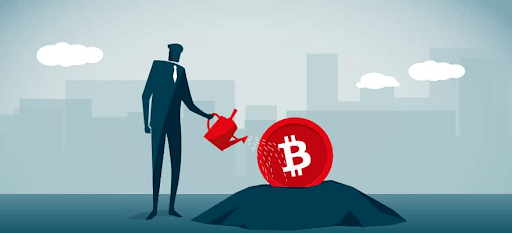For the time being, the base layers of Bitcoin, blockchain, and other cryptocurrencies are driven by emotional humans like you and me. Until the institutions fully arrive, and the crypto market grows significantly, speculators, traders, investors, HODLERs, YOU, me and other retail market participants have to deal with the actions and results of ourselves.
Institutions are a strong force, but so is retail. This means the market remains more emotionally driven vs. algorithmically driven. This is one reason why technical analysis works well: the lines on a chart correlate to the irrational ups and downs an individual goes through.
Here, I’ll help beginners understand some of the more overwhelming aspects of the crypto market designed to target retail participants and influence our decisions.

The Sky Is Falling
If someone had just joined the crypto market during the downturn, they would probably think the market is dead. One glance at headlines from popular news sources would reasonably lead someone to believe Bitcoin is never returning. They’ll think China and the U.S. want nothing to do with the asset, gold is superior, and the world’s smartest man prefers a dog coin over the real deal.
These are just a few of the current signs that the market is probably trying to scare you, but the general tactics never change. Markets are designed to transfer wealth from the inpatient and uninformed to the patient and informed HODLERs. I detailed below a few tell-tale signs the market is in a panic. They are almost always the same each time, regardless of Bitcoin dropping to $1, $100, $3,000, or $30,000.
First, bulls are unashamed of their optimism. But the deeper price goes, the quieter they become. When Bitcoin hit $3,000 last year during COVID, bulls were non-existent. It was as if nobody showed up to work except shit talkers.
This resulted in bears becoming popular once again and them doing what they do best: continuing to call for more pain, only to be caught in a massive trap. When the market is down, the only seemingly “valid” targets become ones that are lower on the chart. As numbers begin to spiral down, fundamentals appear to no longer exist, and superficial concerns are magnified 10 to 1. All of these signs combined put the fear and greed index at “extreme fear.”
Extreme Euphoria
On the other side of pain in the markets is euphoria, a sentiment that feels good for everyone involved. The last time the market was seeing repeated daily returns, everyone was friends again, Coinbase and its listing was king, Bitcoin’s next move could only be $100K, and crypto Twitter was buying a lot of new cars.
Just like the emotion of fear, the same tell-tale signs always reappear when the market turns greedy.
When this happens, the first early sign is less bickering and more positivity. It’s harder to point a finger at a person or protocol when you both are happy about rising prices. The Ethereum vs. Bitcoin debate ceases to exist, subtle jabs are replaced by humble brags, and the bragging becomes perceived as celebrating. As the hate begins to wash away, haters will deny hating Bitcoin in the first place… In fact, they supported it all along.
The only sin one can commit when the market is rising is selling. Selling becomes the mutual enemy of the market. It brings together warring tribes around a forbidden act. All of these are repeated examples of greed. But some of the most historical reactions to greed in the market are absurd price predictions, changing narratives (i.e. new macro beliefs), and “extreme greed” on the Fear & Greed Index. So, if we know what signs to look for, why does this matter?

Markets Always Change
The sentiment of the market is designed to trick you into believing a sense of “permanency” in its current state of being. When all hope is lost, whales want you to believe that nothing can change for the better, and things can only get worse. If you fall into this trap, you will be inclined to sell at some of the worst points, leaving someone happy you sold them your position on the other side.
When the market is raging up and the sky’s the limit, whales want you to believe the market can never correct, it can only get better. Susceptible retail crypto traders that continue to buy at the highs create the perfect exit for whales who need buyers. If you fall into this trap, you will perpetually buy the high and never take profit. A veteran with a bigger position is always looking to profit off your false sense of permanency, hopium, or despair.
What to Do About It
There are a couple of ways to combat this. First, avoid the emotional traps. The market always reverts to the other side of the spectrum of emotions. Iin the +10 years crypto has existed, it has NEVER stayed permanent. Every high that has ever been printed on a chart has been revisited and broken. Once they realize the crypto market is not permanent, retail traders will be more inclined to be on the right side of trades or investments.
Furthermore, if you zoom out, the market has ALWAYS gone up. Even if you have only bought the “highs,” according to history, you will eventually be in the green. The temporary struggles Bitcoin and the larger crypto market are going through are not enough to break the model. The model has always oscillated back.
When it comes to reading the market, sentiment is everything, understanding that will keep your investment strategy intact.
